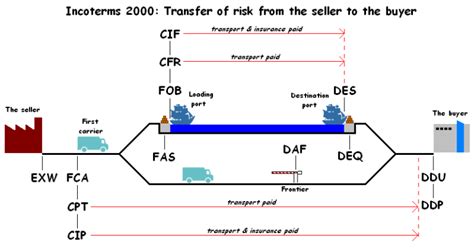Are Turn

Welcome to an in-depth exploration of the fascinating world of Turn Signals, an essential yet often overlooked automotive feature. In this comprehensive article, we delve into the intricacies of turn signals, their significance, and their evolution, offering a unique perspective on a seemingly simple aspect of vehicle safety and design.
The Evolution of Turn Signals: From Mechanical to Smart

The concept of turn signals, or directional indicators, has come a long way since its early inception in the automotive industry. What started as a simple mechanical lever-operated system has transformed into an advanced, electronically controlled feature that enhances both safety and aesthetics.
The journey of turn signals began in the early 20th century, with the first recorded use in 1907 by a Milwaukee dentist, August D. Fielitz. His design, patented as the "Semaphores", utilized mechanical arms to signal turns. However, it wasn't until the 1930s that turn signals as we know them today began to take shape.
In 1938, a Philadelphia-based company, Auto-Lite, introduced the first electric turn signals. These signals used a relay system to activate a flashing light on the rear of the vehicle. This innovation marked a significant step towards improving road safety, as it provided a standardized way for drivers to communicate their intentions to others on the road.
The post-World War II era saw a rapid advancement in automotive technology, and with it, the refinement of turn signals. In the 1950s, Cadillac introduced the first automatic turn signals, which would cancel out after a turn was completed. This eliminated the need for drivers to manually turn off the signals, reducing the risk of driver error.
The Rise of LED Technology
The 1990s brought about another significant shift in turn signal technology with the widespread adoption of Light Emitting Diodes (LEDs). LEDs offered a brighter, more efficient light source compared to traditional incandescent bulbs. Their longer lifespan and lower power consumption made them an ideal choice for turn signals, and they quickly became a standard feature in modern vehicles.
Today, we're witnessing the emergence of smart turn signals, which utilize advanced sensors and algorithms to enhance safety even further. These signals can automatically adjust their brightness based on ambient light conditions, ensuring maximum visibility at all times. Some systems even integrate with adaptive cruise control and lane-keeping assist to provide more precise and contextually relevant turn signal activation.
| Turn Signal Type | Description |
|---|---|
| Mechanical | Early systems operated by a lever, often requiring manual cancellation. |
| Electric | Introduced in the 1930s, these used a relay system for flashing lights. |
| Automatic | Cadillac's innovation in the 1950s, these self-canceled after a turn. |
| LED | Widespread adoption in the 1990s, offering brighter, more efficient signals. |
| Smart Turn Signals | Modern systems that use sensors and algorithms for enhanced safety and visibility. |

The Role of Turn Signals in Road Safety

Turn signals are an integral part of road safety, serving as a vital form of communication between drivers. By indicating their intention to turn or change lanes, drivers provide advance warning to other road users, helping to prevent accidents and ensure smooth traffic flow.
Enhancing Visibility and Predictability
One of the primary functions of turn signals is to enhance the visibility of a vehicle’s intended movement. Whether it’s a simple turn at an intersection or a lane change on a highway, the flashing signal alerts other drivers to the vehicle’s upcoming maneuver. This predictability is crucial in maintaining a safe and orderly traffic environment.
In low-light conditions or adverse weather, the bright flashing lights of turn signals become even more critical. They help to draw attention to the vehicle, ensuring that other drivers are aware of its presence and intended direction. This is especially important for smaller vehicles or those with less conspicuous lighting systems.
Reducing Human Error
Turn signals also play a significant role in reducing human error on the road. By providing a clear visual indication of a driver’s intention, they minimize the risk of unexpected maneuvers, which can lead to collisions. This is particularly beneficial in busy urban areas or during peak traffic hours when the potential for accidents is higher.
Furthermore, the automatic cancellation feature in modern turn signals helps prevent drivers from forgetting to turn off their signals. This simple yet effective design element reduces the likelihood of confusion or misinterpretation by other drivers, further enhancing road safety.
Integration with Advanced Driver Assistance Systems (ADAS)
In recent years, turn signals have become increasingly integrated with ADAS technologies. These systems, such as lane departure warning and adaptive cruise control, work in tandem with turn signals to provide a more comprehensive safety net for drivers.
For instance, when a driver activates a turn signal, the lane departure warning system can be temporarily disabled, allowing the driver to safely change lanes without triggering a warning. Similarly, adaptive cruise control can adjust the vehicle's speed and following distance when a turn signal is activated, providing a smoother and safer driving experience.
The Future of Turn Signals: Beyond Visibility
As automotive technology continues to evolve, so too will the design and functionality of turn signals. The future of turn signals is likely to be shaped by several key trends and innovations.
Dynamic and Adaptive Signaling
One emerging trend is the development of dynamic turn signals, which can adapt their behavior based on various factors. For instance, signals could flash more rapidly when the vehicle is traveling at higher speeds, providing a more urgent indication of an impending maneuver. Alternatively, they could adjust their brightness or flashing pattern based on the proximity of other vehicles, ensuring optimal visibility without causing distraction.
Integration with Vehicle-to-Vehicle (V2V) Communication
With the advent of connected vehicles and V2V communication, turn signals are set to play an even more crucial role in road safety. V2V technology allows vehicles to exchange data, including information about their intended movements. When integrated with turn signals, this technology can provide advanced warning to nearby vehicles, helping to prevent accidents and improve traffic flow.
Enhanced Aesthetics and Customization
Beyond safety, the future of turn signals also holds promise for aesthetic enhancement and customization. LED technology has already opened up new possibilities for signal design, with manufacturers experimenting with different shapes, colors, and lighting patterns. As vehicle styling continues to evolve, turn signals are likely to become an integral part of a vehicle’s overall design language, offering a unique signature for each brand or model.
How often should I replace my turn signal bulbs?
+It’s recommended to replace turn signal bulbs every 2-3 years or whenever you notice a decrease in brightness. Regular maintenance ensures optimal visibility and road safety.
Are there legal requirements for turn signal placement and design?
+Yes, most countries have regulations regarding turn signal placement, color, and flashing rate. These regulations are in place to ensure consistency and improve road safety.
What are some common issues with turn signals and how can they be fixed?
+Common issues include burnt-out bulbs, faulty flashers, or broken wiring. Depending on the problem, solutions can range from simple bulb replacements to more complex electrical repairs.



